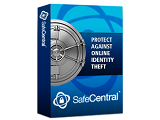FinancialPost.com reported on March 24, 2011 that the security at the world’s largest travel website, TripAdvisor LLC* was breached by an “unauthorized third party” the previous weekend. The company’s email addresses belonging to TripAdvisor’s 20 million members were taken.
The travel website states the source of the vulnerability has been discovered and shut down. Fortunately, TripAdvisor does not collect credit card or financial information from its members; however, members may receive some unsolicited emails (spam) as a result of this incident.
This is not the first time that large online companies have had information taken from their systems. Last December, a group of hackers, known as “Gnosis,” broke into the Gawker Media user database and stole contact information; and popular online dating websites, PlentyOfFish and eHarmony, have also been victims of data theft in the last two months.
Some hackers have even higher ambitions than just collecting contact data. In early February, the operator of the Nasdaq Stock Exchange, the largest electronic trading platform in the United States, found “suspicious files” on its U.S. servers which led to the discovery of repeated attempts over the past year to access confidential information.
SafeCentral can protect your business and can secure an entire organization from malware including screen scrapers, key loggers and DNS redirects. SafeCentral protects a company’s VDI, SSL VPN and Cloud Service from malware that may be infecting local PCs used to access these secure areas.
To learn more, sign up for SafeCentral’s Enterprise Webinar on Cloud and Remote Endpoint Data Loss Prevention, on Wednesday, April 6, 2011 at 2:00 p.m. Hosted by SafeCentral’s CTO Ray Dickenson. The webinar will discuss the following
- New areas of risk for your customers
- How cybercriminals are getting access to retail and wholesale banking customers' accounts
- How you can proactively stop malicious attacks
*TripAdvisor is a worldwide forum where anyone can contribute hotel reviews. The 18 websites that operate in 27 countries under the TripAdvisor Media Group — which is owned by Expedia Inc.
